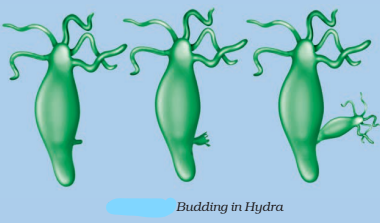NCERT Solutions for Class 8 Science Chapter 9 Reproduction in Animals
Exercises
Question :- 1. Explain the importance of reproduction in organisms.
Answer:- Reproduction is a biological process through which organisms give birth to their off springs. It helps in maintaining the continuity and increasing the population of a particular species.
Question :- 2. Describe the process of fertilisation in human beings.
Answer:- The fusion of male gametes “Sperms” with the female gametes “Ova” is called fertilization. This results in the formation of a fertilised egg or zygote
Question :- 3. Choose the most appropriate answer.
(a) Internal fertilisation occurs
(i) in female body.
(ii) outside female body.
(iii) in male body.
(iv) outside male body.
Answer:- (i) in female body.
(b) A tadpole develops into an adult frog by the process of
(i) fertilisation (ii) metamorphosis (iii) embedding (iv) budding
Answer:- (ii) metamorphosis
(c) The number of nuclei present in a zygote is
(i) none (ii) one (iii) two (iv) four
Answer:- (ii) one
Question :- 4. Indicate whether the following statements are True (T) or False (F).
- (a) Oviparous animals give birth to young ones. ( )
- (b) Each sperm is a single cell. ( )
- (c) External fertilisation takes place in frog. ( )
- (d) A new human individual develops from a cell called gamete. ( )
- (e) Egg laid after fertilisation is made up of a single cell. ( )
- (f) Amoeba reproduces by budding. ( )
- (g) Fertilisation is necessary even in asexual reproduction. ( )
- (h) Binary fission is a method of asexual reproduction. ( )
- (i) A zygote is formed as a result of fertilisation. ( )
- (j) An embryo is made up of a single cell. ( )
Answer:-
- (a) False
- (b) True
- (c) True
- (d) False
- (e) True
- (f) False
- (g) False
- (h) True
- (i) True
- (j) False
Question :- 5. Give two differences between a zygote and a foetus.
Answer:-
Zygote | Foetus |
It is a Unicellular, i.e. it contains only one cell | It is a Multicellular, i.e. it contains many cell |
It is formed when a male gamete or sperm and a female gamete or ova fuse together. | It is formed by the zygote’s repeated division. |
Question :- 6. Define asexual reproduction. Describe two methods of asexual reproduction in animals.
Answer:- Asexual reproduction means the process of reproduction in which only one parent is involved. There are mainly two methods of asexual reproduction:-
(i) Binary fission: In binary fission, a single parent cell is divided into two equal individual cells. It occurs in Amoeba.
(ii) Budding: Budding occurs when an organism develops a bulge known as bud, which develops into an adult organism and separates from the parent body to live a life of its own. It occurs in Hydra.


Question :- 7. In which female reproductive organ does the embryo get embedded?
Answer:- Uterus
Question :- 8. What is metamorphosis? Give examples.
Answer:- The transformation of the larva into adult through drastic changes is called metamorphosis. For example it occurs in frog and butterfly.
Question :- 9. Differentiate between internal fertilisation and external fertilisation.
Answer:-
Internal Fertilisation | External Fertilisation |
It occurs inside the female body. | It occurs outside the female body. |
Offsprings have a high chance of survival. | Offsprings have a low chance of survival. |
The females lay either fertilised eggs or a fully grown young one. | The females lay unfertilised eggs |
Examples are humans, dogs, cows etc. | Examples are fish and frogs etc. |
Question :- 10. Complete the crossword puzzle using the hints given below.
Across
- The process of the fusion of the gametes.
- The type of fertilisation in hen.
- The term used for bulges observed on the sides of the body of hydra.
- Eggs are produced here.
Down
- Sperms are produced in these male reproductive organs.
- Another term for in vitro fertilisation.
- These animals lay eggs.
- A type of fission in amoeba.

